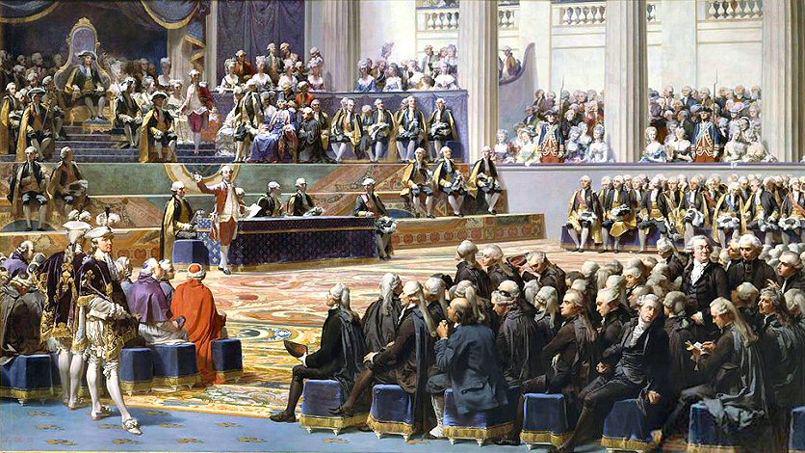
Story Highlights
- Historical event:
- 05 May 1789
- On this day, summoned by King Louis XVI, representatives of three classes of French society - the clergy, the nobility, and commoners (third estate) met in Versailles. It was the first such general meeting after a full 174 years.
The French consider this day the beginning of the French Revolution.
Specifically, a key event occurred on this day that enabled the launch of a political revolution. It was a meeting of the Estates-General – a sort of representative body (parliament) for the whole of France.
Certainly, France had Estates General (États généraux) back in the Middle Ages, but in the age of absolutism they did not convene from 1615 up until 1789 (a full 174 years).
Frenchmen who wanted to limit royal power believed that the Estates General should receive an important role, the kind that parliament had in Great Britain (i.e. a key role in politics). It would be a shift from royal absolutism towards democracy.
What led King Louis XVI to convene the Estates General for the first time after 174 years?
France was in a difficult financial situation and new taxes needed approval. The government first tried to negotiate with the high aristocracy, but when they refused, it was decided to target a wider population.
The Estates General consisted of three estates: the clergy, the nobility, and commoners.
The commoners were initially satisfied because they were called in greater numbers than the clergy and nobility, but were later disappointed when it was found that the principle of one man – one vote will not be applied, but that it will be voted according to classes. In this respect they considered themselves disadvantaged.
The first session was held on this day in a hall near the castle of Versailles.
This historically important location can be seen today, located some 800 meters from the castle entrance, on the main avenue leading to it (Avenue de Paris).
Among the deputies on that first session were some well-known people from all three classes. For example, among the deputies of the third estate were Joseph – Ignace Guillotin (the guillotine was named after him), Abbé Sieyès, Pierre Samuel du Pont de Nemours (his family du Pont is today one of the richest in the world, thanks to Teflon and nylon), etc.
Among the representatives of the clergy were bishops and archbishops, led by the Archbishop of Paris as the first among them in the hierarchy.
Interesting were also the representatives of the nobility, among who were many famous names: the Duke of Orleans (the first prince of royal blood), Viscount de Beauharnais (first husband of Napoleon’s Joséphine), Marquis de La Fayette (famous military leader in the American War of Independence), Baron Wimpffen, and many others.




